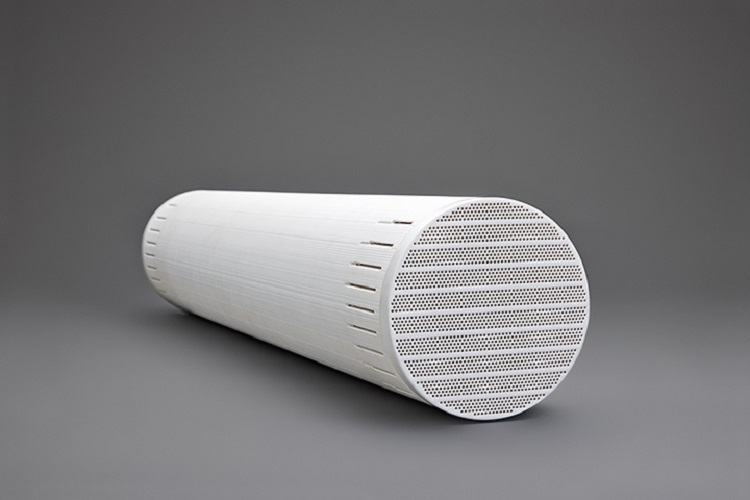
Japanese ceramics company NGK Insulators has developed a carbon dioxide separation membrane for industrial exhaust gas, which during testing achieved a CO2 separation factor of approximately five times that of conventionally developed DDR-type zeolite membrane used for CO2 separation.
Amid a global shift towards carbon neutrality, there is a growing social need for CO2 separation and recovery technology for industrial exhaust gas emitted from industrial plants. NGK has therefore used its large membrane manufacturing technologies and technologies for forming uniform membranes to develop a new CO2 separation membrane for industrial exhaust gas.
Conventionally developed DDR-type zeolite membrane can be used for CO2 separation using differences in molecule size. It is easy to separate CO2 in associated gas and natural gas, since methane, their major component, has a larger molecule size than CO2. However, in industrial exhaust gas, the major components are nitrogen and oxygen, which have molecule sizes similar to CO2. Therefore, it is difficult to precisely separate CO2 from industrial exhaust gas using a DDR-type zeolite membrane.
The newly developed CO2 separation membrane for industrial exhaust gas makes use of a difference in adsorption characteristics (affinity) for molecules to separate CO2 from nitrogen and oxygen, which increases the CO2 separation factor. Using the characteristics of ceramics, which can be used under harsh conditions, the company is working to increase the separation factor even further for high temperature industrial exhaust gases, aiming for commercialisation in 2030 after demonstration testing.





